On the menu today:
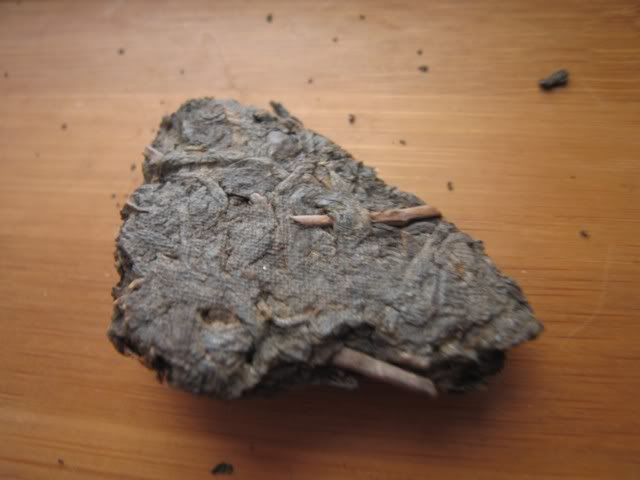
This is a piece of an alleged 60s Guangyun Gong from a tea friend in Hong Kong. He bought it as broken pieces, and the guy who sold it to him wasn’t sure what it was either. After some repeated tastings and research and trying to put the pieces together, he thought that this is probably a 60s GYG. As you can see, the cake is rather tightly compressed, and the edge of the cake is a bit tapered. The shape looks plausible…
The first three infusions:
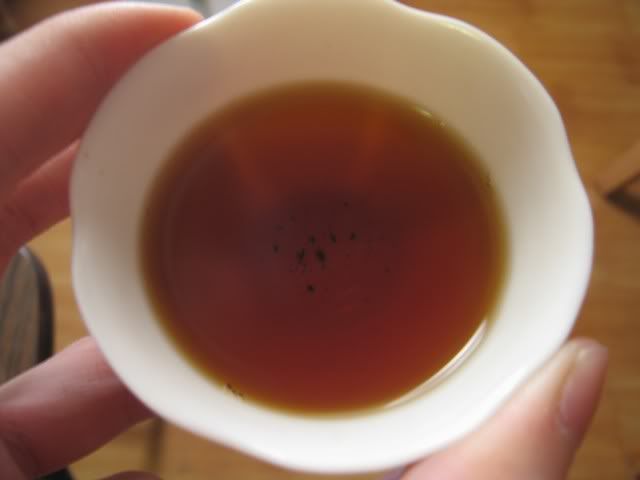
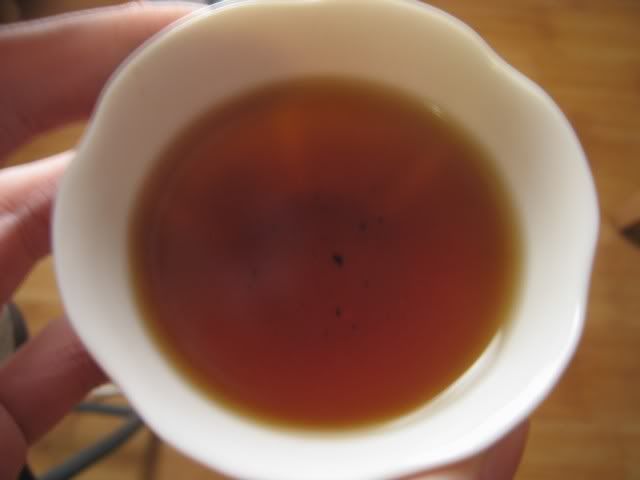
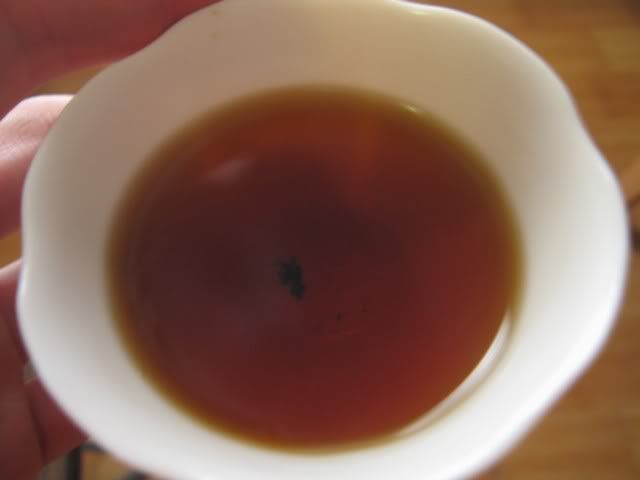
It took a little while before the leaves fully opened up. The storage condition of this piece is somewhat wet, with some white stuff inside the piece as well as on the surface. The leaves are mostly buds, with some stalks and bigger leaves. The taste…. is sweet and mellow. It’s obvious and immediate, with a gentle sweetness coating my whole mouth. There’s not a hint of bitterness, but also no hint of poor storage either in a way that a poorly wet stored cake from, say, the 80s will. The tea is extremely smooth.
I added some splash of high mineral water for the 4th infusion, and the tea became rougher. I turned back the water to a lighter mineral content with a few splahes of very light mineral water (super expensive… from Japan….) and the mouthfeel immediately improved. It’s really quite interesting how water mineral content can really change the way a tea feels in the mouth.
The 15th infusion:
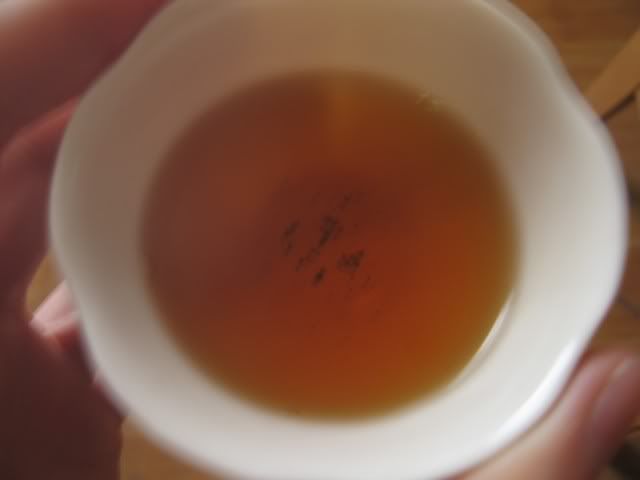
The tea was still going strong. It looks weak, but it doesn’t taste weak. We got more than 20 infusions out of it before I called it quits. It could keep going.
The wet leaves look a bit carbonated
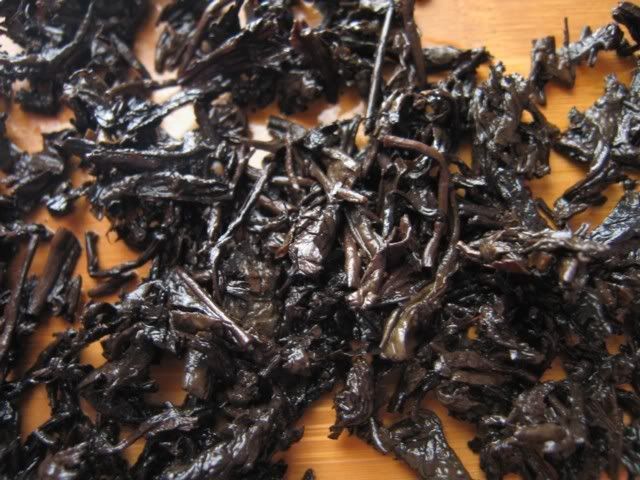
Black, with some brown bits, and you can use cooked puerh to fake this tea, but not the taste…. I don’t know for sure if it’s a 60s GYG, but I’m quite sure this is a tea with at least 30-40 years of age. Younger teas just don’t taste like this.

 RSS - Posts
RSS - Posts
5 responses so far ↓
HobbesOxon // January 27, 2007 at 5:19 pm |
At the risk of sounding exceedingly strange, could I trouble you to list the mineral content of the low and high waters that you used? I’m steadily comparing a bunch of British and French waters, and am very interested to see how these compare with those two with which you noticed such dramatic differences.
Thanks, and toodlepip,
Hobbes
MarshalN // January 28, 2007 at 11:42 am |
Ok…. let me try translating from Japanese and Chinese to English.
The low mineral water is from Japan. It’s got 46mg/L of dissolved solids. It doesn’t say exactly what’s in it. I can tell you there’s, per 100ml of water, 0.47mg of Magnesium, 1.1mg of Calcium, 0.06mg of Potassium, and I think 1.5mg of Sodium.
As for the Chinese water, with high mineral content, total dissolved solids can range from 200-500mg/L. Most of it is Carbonates, about 160-200mg/L. There is also 35-55mg/L of Calcium and 25-55mg/L of H2SiO3. There are also smaller amounts of other stuff. I think it is pretty normal for carbonates to be the most dominant component of mineral content of any high TDS water.
HobbesOxon // January 28, 2007 at 12:48 pm |
Thanks for the details. There’s one particularly bad water I’ve tried lately (from the usually-high quality British chain “Marks and Spencer”) which is approximately the same to your Chinese high mineral content variety, but with 10x the calcium. I suspect that’s the chalk component (CaO3) which is messing up my recent infusing. The bicarbonates are 314 mg/L, too. I guess this explains the exceedingly poor performance.
Toodlepip,
Hobbes
sspeakfreely // January 28, 2007 at 12:53 pm |
Thanks for this review – I’m trying to educate myself about what an older sheng ought to look/taste like. You mention the nice, smooth mouthfeel, but what about the scents/taste? Was there much in the way of florals or huigan?
MarshalN // January 31, 2007 at 11:47 am |
Actually, Hobbes, the water thing also depends a lot on the tea itself. So, whereas for this particular tea a low mineral water seems to work better, for another tea it could be the other way around, as I’ve discovered. It takes some experimentation.